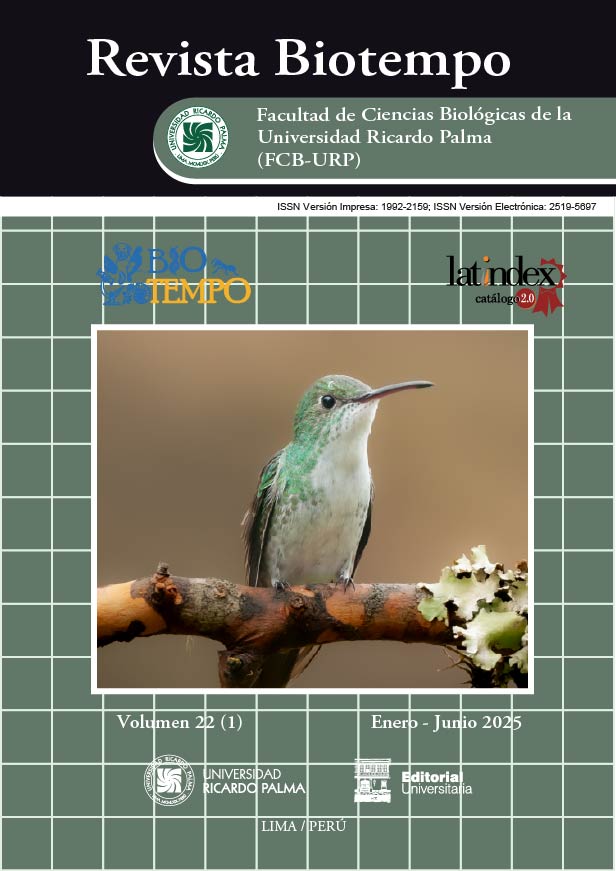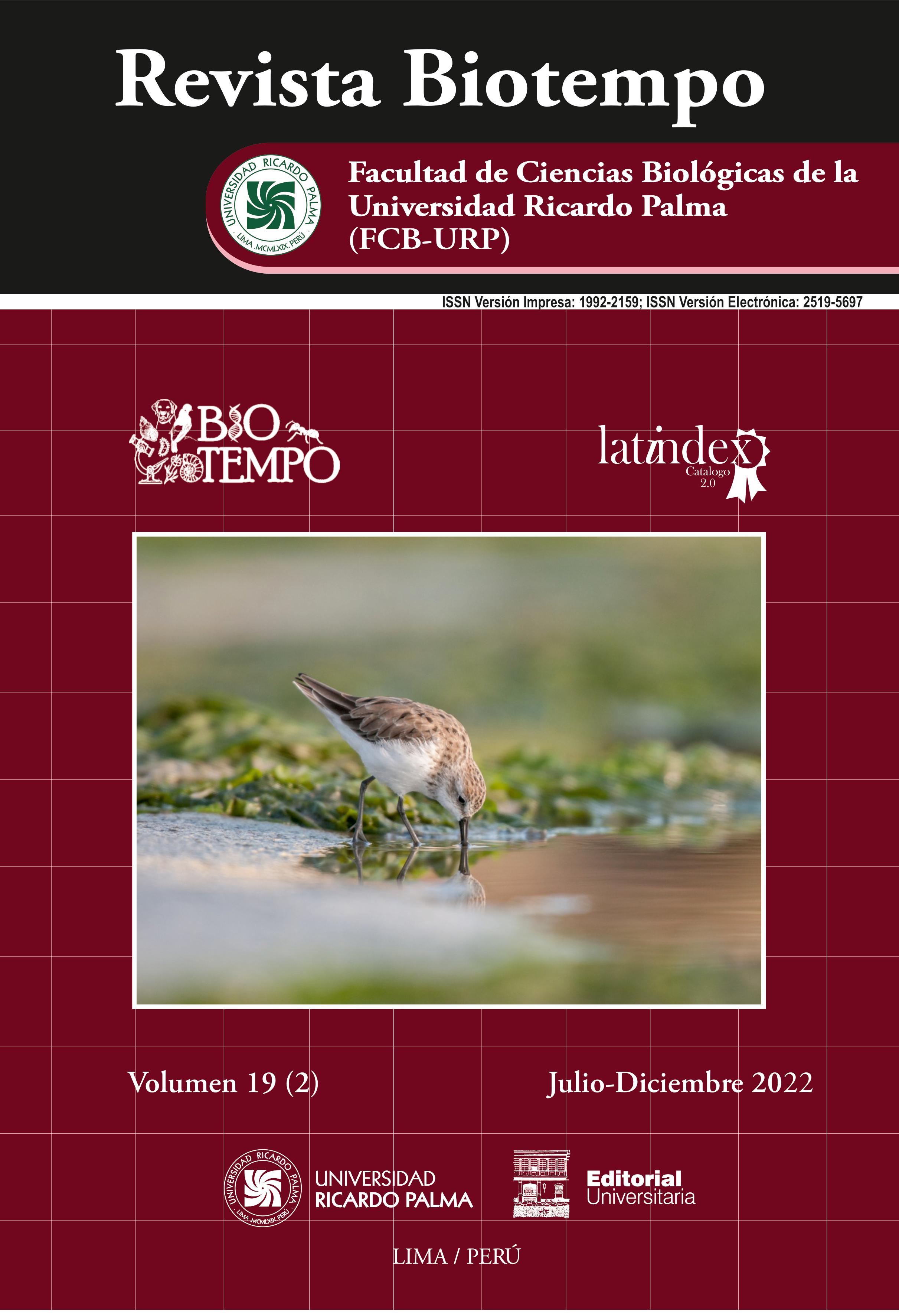Monitoring plots in productive landscapes in Oxapampa Ashaninka Yanesha biosphere reserve from Peru
DOI:
https://doi.org/10.31381/biotempo.v22i1.7336Keywords:
agroecosystems, agrochemicals, biodiversity, composition, management, productionAbstract
Productive landscapes are part of the diverse habitats in Oxapampa Ashaninka Yanesha biosphere reserve, Peru. The maintenance of its ecological functions implies the recognition of the human interactions with the social and ecological components. Therefore, it is important to study these relations and to evaluate the parameters that’s provide information related to management practices that produce benefits in the society-nature relationship. Through monitoring plots, it was analyzed the relation of Theobroma cacao L. “cacao”, Coffea arabica L. “coffee”, and Passiflora ligularis Juss. “granadilla” fruit production variables and different management practices. The maintenance of the original vegetation structure and composition and the use of organic fertilizer showed less pests and aborted fruits, also higher biodiversity index was reported in the “cacao” agroecosystem. The same practices were also associated with “coffee” shade percentages that are positive for its development, and they are also related the presence of non-generalist flora in tree and herbaceous strata. The presence of defects in the “granadilla” fruit its related with the absence of shade. It possible to conclude that in some monitoring plots there are positive results on productivity and the ecosystem derived from the conservation of the composition and structure of the original vegetation.










